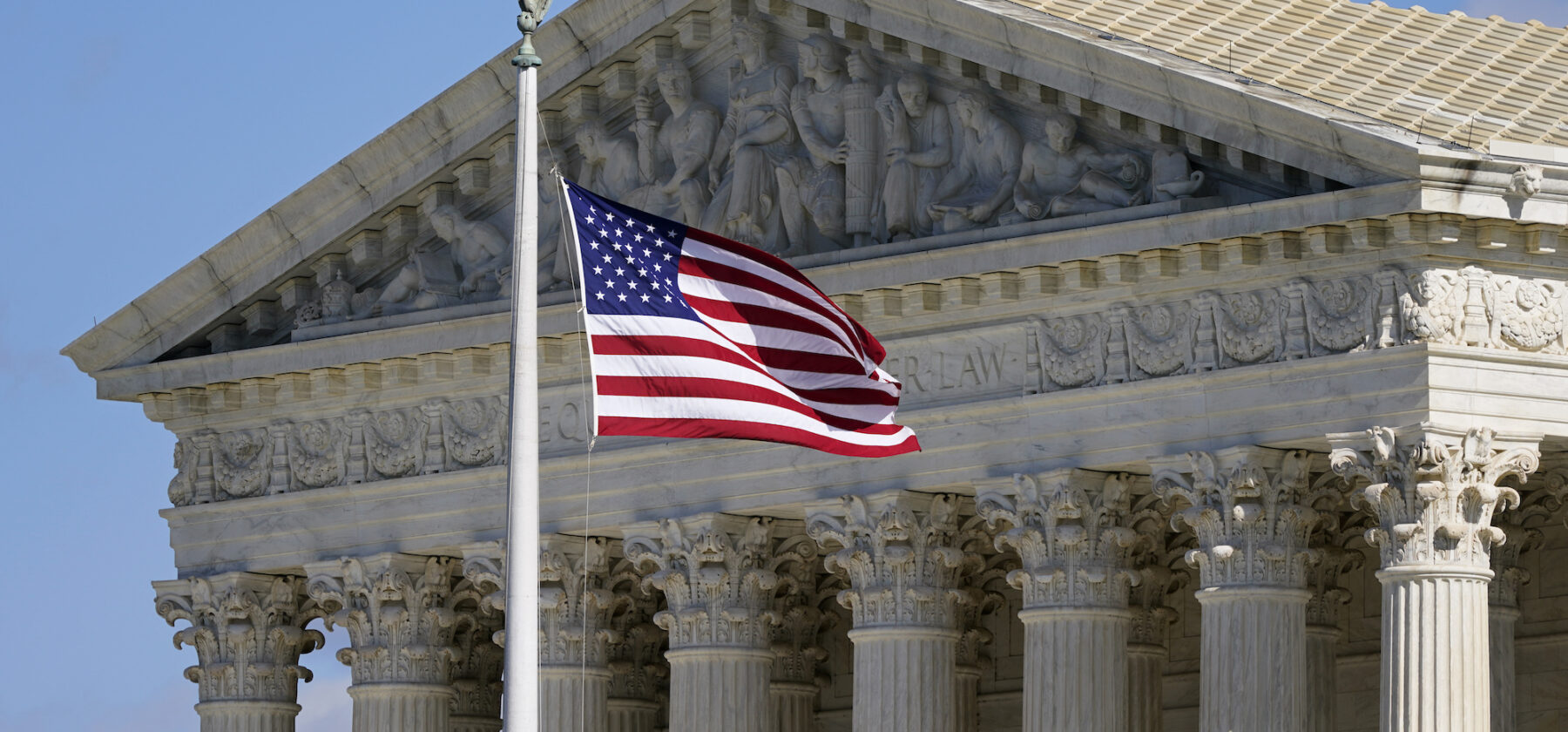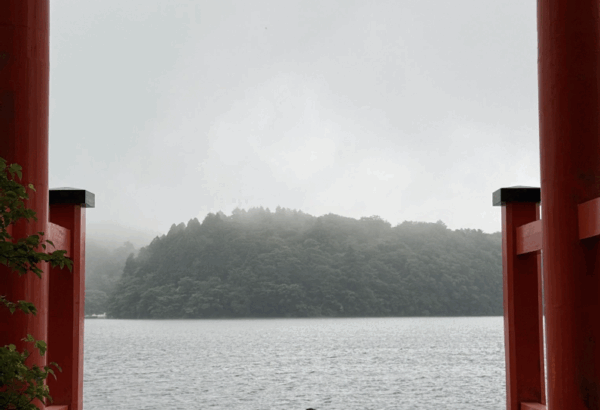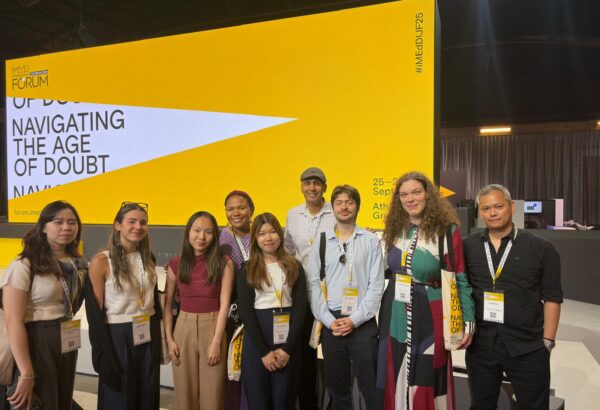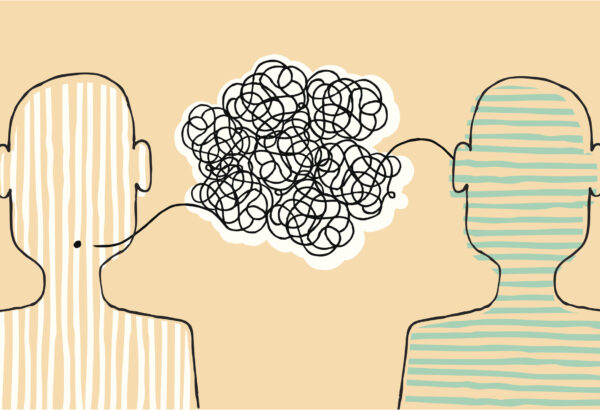Full edited transcript of the event.
Brian Rosenwald, director of the Red and Blue Exchange at the SNF Paideia Program, moderated a panel of experts in a lively conversation on the future of the Supreme Court and the Constitution. He opened the discussion asking the panelists to assess the current state of the Court and its application of constitutional law.
Current State of the Supreme Court
Rogers Smith, a political scientist, and former associate dean of Social Sciences at Penn from 2014-2018 as well as founding director of the Andrea Mitchell Center for the Study of Democracy, replied first, “I do think as a scholar of American constitutional development, that we are at a critical juncture in the history of the Court. We have seen since the creation of a conservative supermajority with the three Trump appointees that the Court has moved further away from the American public’s median views on constitutional issues and has moved significantly to the right in ways that have caused a great deal of controversy. And the question of whether this new supermajority of conservatives will continue to drive the Court in a powerful direction, challenging much settled American constitutional law is one of the central issues of our time.”
In response, Amanda Hollis-Brusky, professor of politics at Pomona College and chair of the department, cited public opinion data indicating that American’s trust in the Court is at an all time low. “A Gallup poll taken between September 1 and September 16 of this year found that only 7% of Americans have a great deal of trust in the Supreme Court. And that is the lowest reading since Gallup started asking this question in the 1970s. Over 58% of Americans disapprove of the Supreme Court. Again, the lowest reading since Gallup started asking that question. So I want to echo what Rogers is saying here and point out the fact that the only real power the Supreme Court has is its legitimacy and folks don’t trust it and likely don’t find it legitimate.” This prompted much discussion among the panelists about the concept of legitimacy. Akhil Reed Amar, the Sterling professor of law and political science at Yale, warned against calling the Court illegitimate citing previous examples where such rhetoric can lead to dire consequences. Kate Shaw, professor of law at Cardozo Law School and co-director of the Floersheimer Center for Constitutional Democracy and Visiting Lecturer at Penn Carey Law School, spelled out the differences between legal legitimacy, “does the court seem to be acting and reasoning in a register of legal decision making,” and public opinion or sociological legitimacy, “is it accepted by the public” and suggested the two are not disconnected.
Keith Whittington, the William Nelson Cromwell professor of politics in the Department of Politics at Princeton University, commented on the recent shift in the make-up of Justices on the Court. “We clearly have a different equilibrium on the Court, [we] have a much more conservative court than we had before. But we also have Justices simply who aren’t in the same space that [former Justice Sandra Day] O’Connor and [former Justice Anthony] Kennedy necessarily were. And as a consequence, it’s going to be a lot of uncertainty and a lot of movement over the next few years as the court settles out and send signals about how it thinks about some of these issues with [the] new Justice lineup. I don’t think that’s necessarily surprising, but it does mean that we’re going to get a lot of new case law, new precedents.” He went on to point out the Court still performs better than many other American political institutions in terms of garnering public trust. “So while it is disturbing that the Court scores lower on these kind of public approval and public confidence ratings than was true earlier, it’s still notable that the Court scores better than other American political institutions, which really is not encouraging about American government more generally. And of course, that’s also true about other major institutions in American society, including universities. And so there’s just a lot of distrust out there about public institutions as a whole. I think it is true that we need to separate out thinking about what legitimacy means and the concerns of the court, how much we ought to read into these kind of public confidence measures.”
Public Trust in American Institutions
Building on this idea of distrust of American institutions including the Court, Brian Rosenwald followed up with a question about the shadow docket, what is it and if the Justices should care about the decline of public trust.
Akhil Amar responded, “on issues of legal ethics, they should definitely not ignore because that’s coming from folks who are in the main, many of us defenders of the court, friends of the court.” He went on to say that in regards to unenumerated rights, legal rights inferred or implied from other rights but not themselves expressly codified within the constitution, public opinion does have a legitimate role. Keith Whittington had a counter opinion saying, “Chief Justices worry too much about institutional effects and what the court’s standing is in society more generally.” Rather than prioritize public opinion, which is highly divided and difficult to track, Whittington surmised the judges would be better off if “they just do the job as best they understand it and hopefully the public will be persuaded that they’re doing a good job.”
Partisanship within the highest Court
Amanda Hollis-Brusky broached the topic of partisanship within the Court. “We know from political science scholarship that the real threat to legitimacy, I’ll use that term, even though it is loaded, is when the public views the judges as nothing more than politicians and robes. It’s not necessarily that they agree or disagree with a decision. That’s kind of an acute effect, and that’ll dissipate. It’s about whether or not what they see the judges doing is judging and judging in a way that is consistent with how our constitutional structure is set up. And since 2010, I think it matters that our court has not been just ideologically divided, but ideologically divided along party lines. So there are partisan judges. Now, every judge who votes liberally is a Democrat. Every judge who votes conservatively is a Republican.” Shaw added on to this idea to make the point explicit by saying, “It really is a pretty recent development that you have this kind of perfect alignment between the votes of Justices in any individual case and the kind of partisan preferences of the presidents who appoint them. It is really only with the addition of the three newest Justices that you, for the first time, have kind of perfect alignment on both left and right between, you know, political preferences of appointing presidents and the Justices votes.” Akhil Amar provided additional political and historical context for how partisanship within the Court reflects a broader polarization of the parties in the country more generally. “We have no liberal Republicans left, no conservative Democrats left in the Senate or in the House, in part because of realignment triggered by the 1964 Civil Rights Act and the 1965 Voting Rights Act and the consequences.” This is reflected both in the high court as well as in America more generally.
Transparency in the Court
Rosenwald pivoted the conversation to ask if it is time for the court to be more transparent about the work it is doing, about ethics, about process and laying out its reasoning for decisions? Kate Shaw responded, “I think the Court is the least transparent institution in American public life. And if it is doing something totally different from the political actors elsewhere in government then the transparency and other rules that apply to it might be defensible and reasonably look different than the transparency rules that apply to other actors and institutions in government. But the more it looks just like a group of political actors, the less defensible it feels to have so little transparency into the workings of the Court….I do think that opening up mechanisms of additional transparency and accountability in the Supreme Court is well worth considering.” On a related topic, Shaw went on to define shadow dockets, “It is a catch all term coined by University of Chicago law professor Will Bode, although I think most associate it now with Steve Vladeck at the University of Texas who has a book by that title coming out in a couple of months. But it just refers to basically everything the Court does outside of its ordinary briefing, oral argument and sort of full consideration decisional processes.” For example, emergency relief, the lifting of stays, election regulation, and other rulings the court “does outside of its ordinary decisional processes that sometimes involve just orders with no reasoning at all.”
Akhil Amar broached the topic of the impact the Trump appointed Justices have had on the Supreme Court and the conflict that might arise between the Supreme Court and the lower courts. “Some of what we’re seeing, frankly, is the product of a very big shift that my colleagues have identified on the Supreme Court. The three new Trump judges resulted in a big shift in the median. And you haven’t had a comparably dramatic shift in the lower courts….The Supreme Court has told the lower court, you can’t anticipate an overruling. We get to change our precedents, but you can’t. And that’s going to manifest itself in some real tensions in cases percolating up.”
Taking the conversation in a different direction, Amanda Hollis-Brusky offered an alternative response to the question of transparency, saying the Court is more transparent than ever. For example, she said, they started streaming their oral arguments during Covid. Previously, “unless you were in the courtroom, you had to wait for a transcript to be uploaded and the audio to be uploaded to get a sense of what the Court was doing.”
Forum shopping and nationwide injunctions
Rosenwald asked the panelists to weigh in on national injunctions in which an individual district judge restricts the federal government from enforcing a statute or regulation everywhere in the country and the role of venue shopping to press issues in places where the district judges and circuit courts of appeal are more likely to be sympathetic. “One way the Court has been able to get around some of the hot button issues has been to punt, to not address them. But if you get things to the most ideological, the appeals courts, you can force them to weigh in on a lot of cases. So do we need to do something about national injunctions and venue shopping?”
The panelists agreed injunctions and trying to get cases into friendly circuit courts is a problem. Kate Shaw connected the idea of national injunctions with the lack of trust in the Court. “I think the message being sent by these nationwide injunctions by judges who are carefully selected, because if you’re the state of Texas and you can choose to file in Austin where you may get an Obama appointee or a Biden appointee or in one of the districts in Texas where you have one or two judges, both of whom are Trump appointees, and you go every single time to the district with just the Trump judges and get the result you want. It really does look like judges just are politicians in robes in a way that I think the Chief Justice should be quite concerned about.” The panelists agreed Trump publicly criticizing a district court judge who ruled against him as being an “Obama judge” hadn’t helped the optics of the Court appearing political.
The conversation then turned to the possibility of an increased occurrence of overturning precedent and whether the there is risk of it appearing the Court is simply a politicized body issuing unreasoned rulings overturning precedent. Amanda Hollis-Brusky explained, “I don’t know that anyone would make the argument that simply overturning precedent is inherently bad. We think [of] Brown versus Board of Education. There’s not a single liberal who would disagree that was the correct decision to overturn Plessy versus Ferguson. However, this period is different from those other Courts. You know, the Lochner Court, the Warren Court, the majorities that were overturning those precedents were not wholly and exclusively aligned with one political party, and they were not wholly and exclusively making decisions that favor the values and politics of one political party.”
Religious liberty and the establishment clause
“I think the number one issue for the current conservatives on the Court is religious liberty and religious freedom addresses a wide range of issues immediately involving churches, issues of education, employment, abortion rights, and much more,” Rogers Smith said. Brian Rosenwald followed on to say, “it does seem like the thing that animates at least two or three of the Justices more than anything else is religious liberty. So, what is the state of religious liberty case law, and is the establishment clause still meaningful in any way with this particular Court?”
Kate Shaw answered first, “The Courts differential treatment of the two religion clauses in the First Amendment, the free exercise clause on the one hand, and the establishment clause on the other is both independently extraordinarily problematic. It has this selective kind of fixation on particular constitutional provisions, which it’s willing to read in ways that sometimes create enormous social change. And it is perfectly willing to completely disregard others.” She went on to talk specifics about the two constitutional clauses, one safeguarding free exercise of religion and the other prohibiting government establishment of religion, and the general understanding of the competing imperatives and the need to give as much expression to each of these constitutional values as possible. “And the Supreme Court has basically come in and said, we don’t actually care about the prohibition on the establishment of religion, and I’m just not sure on what basis that it can be defended.” Amanda Hollis-Brusky jumped in to say, “One of the more interesting turns that I’ve seen with the addition of the Trump Justices is the reframing of establishment clause cases, which are, you know, policies designed to effectively protect government from entanglement with religion. The reframing of those cases as religious discrimination.” The Justices are, she went on, applying the liberal legacy of civil rights and oppressed and marginalized minorities to religious organizations. They’re trying to make the case that religious neutrality by government is a type of hostility towards religion motivated by discrimination.
Smith responded, “The way I’d put it is that the establishment clause isn’t dead. The core meaning of the establishment clause is that there should be no national church in the United States and there’s not going to be a national church of the United States. But the position of the conservative Justices appears to be that you, under the establishment clause, religious groups, can always claim equal treatment with secular groups. But under the free exercise clause, they’re entitled to special privileges, special exemptions, special accommodations, special rights. And if you put those two positions together, equal treatment under the establishment clause, but special privileges due to religious free exercise, you end up with a government that has policies that consistently favor at least the dominant religious groups. And of course, that does raise the establishment clause concerns.” Akhil Amar disagreed and said we aren’t quite there yet. He did, however, agree with Shaw that, “there are two clauses that are kind of at war with each other. I think they’re two sides of the same coin. And the basic idea is equality and equality is going to be an essentially contested concept.” He went on to discuss the two approaches to equality, the separation vision that says politics and religion should never intersect, and then there is the idea that we should not have religious polarization, divisiveness, “Let’s not have religion be a basis for religious warfare between different sects in America.” Keith Whittington brought up the notion of secularization. “Increasingly, what certainly a lot of conservatives are worried about, and I think as a consequence several justices are going to be worried about, is we have a rapidly secularizing society in which religious adherents in general are going to see themselves in the minority position. And that’s going to be a very different world of how to think about religious liberty, how to think about establishment clause and how the Court tries to approach that.”
Dobbs and Fetal Personhood
Getting into Dobbs, the controversial 2022 case in which the Court overturned Roe v. Wade and eliminated the constitutional right to an abortion, Rosenwald asked the panelists, “First and foremost, was it the right decision? Do we think the Court…kind of presented it as, okay, this is the way for us to get out of this thicket, but are they going to end up right back in it? And if so, with what issues? And do you think that the court wants to go further? The majority of five wants to go further than it did in Dobbs?”
On the question of whether the court wants to go further, the panelists had contrasting responses. Amanda Hollis-Brusky said, “yes, given the opportunity, that is where the majority of the majority would want to go.” Whittington disagreed saying, “I don’t think there’s anywhere near five votes to try to constitutionalize protection for fetal life under the 14th Amendment. Likewise, I don’t think there’s anywhere near five votes to go after same sex marriage.” Akhil Amar agreed there won’t be fetal personhood nor that a tier of broader rights is at risk. “I don’t see Dobbs as betokening a broad unraveling of landmark cases involving gay rights, same sex marriage, contraception, interracial marriage and the like.” Shaw was uncertain about the possibility of the Court’s ruling on fetal personhood saying, “The surface of the opinion has all of this language about the importance of democratic deliberation. And obviously enshrining fetal personhood in the Constitution would remove from the democratic process and precisely the way the opinion critiques Roe for having removed the abortion question from the democratic process. So I think on first read, it’s easy to say clearly they could never with a straight face then do something that would again remove the democratic process. But I actually do think that the more you read the discussion of democratic deliberation in the Dobbs opinion, the sort of thinner and stranger it seems.” After further dialogue, Akhil Amar spotlighted Moore v. Harper, a current case before the Court. “So this is a case in which the question is, can state legislatures on their own, regardless of what a state constitution says, basically regulate congressional elections?” Amar stressed the importance of this case and impressed upon the attendees to pay attention to the ruling. “It’s a case of the decade, especially if decided the wrong way would make Bush versus Gore look like a tiny, teeny little thing.”
Looking Forward
As a conclusion to the talk, Rosenwald invited the panelists to give their forecast for the future of the Court. “So where are we going? Where should we be going with this in terms of kind of the court as an institution?” Akhil Amar declined to make predictions but instead offered a few ideas he is in support of and those that he is not. “I don’t support packing the Court. I don’t support stripping it of jurisdiction. I do support term limits for justices. I support ethics statutes for Supreme Court justices.” Amanda Hollis-Brusky replied, “Akhil and I are in a working group together advocating for 18 year term limits, statutory term limits. I do think you need to regularize Supreme Court appointments.” Kate Shaw also expressed favor for term limits and also more public scrutiny of the Court. “It would be great, I think if there was more public discourse that keeps these structural reform prospects front of mind…more broadly. The Supreme Court commission [empaneled by President Biden] obviously considered this stuff publicly and since it shut down a public debate about these questions has been pretty muted.” Rogers Smith joined the chorus in favor of term limits, though he doubted they will happen. “But on the question of institutional changes, I’m for term limits, but I think they would require a constitutional amendment, so I’m not sure they’re really going to happen. And I would just underline that even though I don’t like a lot of the Court’s decisions, I do believe that if you enact clear legislation that establishes the policies you want, the courts are mostly going to defer to them.” Keith Whittington had the final word on the topic, talking broadly about the work he did on the Supreme Court Commission. “I think the commission report was quite good in trying to overview a lot of the kind of reform measures we’re talking about, including both court expansion and term limits. The commission was asked not to make recommendations about those, and so we didn’t. I’m personally pretty hostile to Court expansion and fairly skeptical still about term limits. But there are interesting things to talk about on this. By way of conclusion, I guess, where the point that I was thinking about earlier and is relevant here as well, that is to say politically, historically, not only are we in this very interesting and new period in which we’re dramatically polarized, you see that on the court as well. We’re also in this very extended cycle in which neither of the two major parties have been able to get a very durable majority. And so one way we resolve these kinds of conflicts in the past is somewhat we just win some elections. And as a consequence, you get the 37 switch and Republicans don’t get to come back from as a consequence of that. And so as a consequence, you wind up with Earl Warren, who winds up agreeing with what the New Deal Democrats did precisely because the Democrats were so successful in winning elections. That’s not [the] world we’re currently living in. It’s not the world we’ve been living in [for] quite some time. Instead, neither party seems to be able to solidify [a] majority. Neither one can hold a chamber for very long, elections go back and forth. So we’re in this very weird moment of a very polarized system and with no stable majorities. And I keep waiting, as many have for quite some time, for one of the parties to step up and actually win a majority. And under those circumstances, I would expect the court to fall in line with whichever party winds up doing that, just as it has in the past.”




